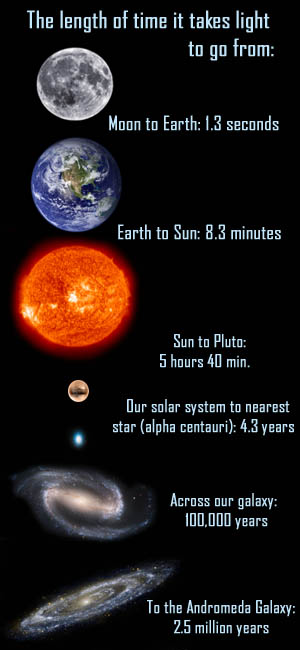
In 1894, Paul Drude redefined c with its modern meaning. Historically, the symbol V was used as an alternative symbol for the speed of light, introduced by James Clerk Maxwell in 1865. In 1856, Wilhelm Eduard Weber and Rudolf Kohlrausch had used c for a different constant that was later shown to equal √ 2 times the speed of light in vacuum. The speed of light in vacuum is usually denoted by a lowercase c, for "constant" or the Latin celeritas (meaning 'swiftness, celerity'). 7.6 Increased accuracy of c and redefinition of the metre and second.


The ratio between c and the speed v at which light travels in a material is called the refractive index n of the material ( n = c / v). The speed at which light propagates through transparent materials, such as glass or air, is less than c similarly, the speed of electromagnetic waves in wire cables is slower than c. The expansion of the universe is understood to exceed the speed of light beyond a certain boundary. In some cases, objects or waves may appear to travel faster than light (e.g., phase velocities of waves, the appearance of certain high-speed astronomical objects, and particular quantum effects). In the special and general theories of relativity, c interrelates space and time and also appears in the famous equation of mass–energy equivalence, E = mc 2. Particles with nonzero rest mass can be accelerated to approach c but can never reach it, regardless of the frame of reference in which their speed is measured. Such particles and waves travel at c regardless of the motion of the source or the inertial reference frame of the observer. Massless particles and field perturbations, such as gravitational waves, also travel at speed c in a vacuum. He explored the consequences of that postulate by deriving the theory of relativity and, in doing so, showed that the parameter c had relevance outside of the context of light and electromagnetism. In 1905, Albert Einstein postulated that the speed of light c with respect to any inertial frame of reference is a constant and is independent of the motion of the light source. In a paper published in 1865, James Clerk Maxwell proposed that light was an electromagnetic wave and, therefore, travelled at speed c. Progressively more accurate measurements of its speed came over the following centuries. Ole Rømer first demonstrated in 1676 that light travels at a finite speed (non-instantaneously) by studying the apparent motion of Jupiter's moon Io. The speed of light can be used in time of flight measurements to measure large distances to extremely high precision. In computing, the speed of light fixes the ultimate minimum communication delay between computers, to computer memory, and within a CPU. When communicating with distant space probes, it can take minutes to hours for signals to travel from Earth to the spacecraft and vice versa. Starlight viewed on Earth left the stars many years ago, allowing humans to study the history of the universe by viewing distant objects. For many practical purposes, light and other electromagnetic waves will appear to propagate instantaneously, but for long distances and very sensitive measurements, their finite speed has noticeable effects. Īll forms of electromagnetic radiation, including visible light, travel at the speed of light.

According to the special theory of relativity, c is the upper limit for the speed at which conventional matter or energy (and thus any signal carrying information) can travel through space. The speed of light c is exactly equal to 299,792,458 metres per second (approximately 300,000 kilometres per second 186,000 miles per second 671 million miles per hour). The speed of light in vacuum, commonly denoted c, is a universal physical constant that is important in many areas of physics.


 0 kommentar(er)
0 kommentar(er)
